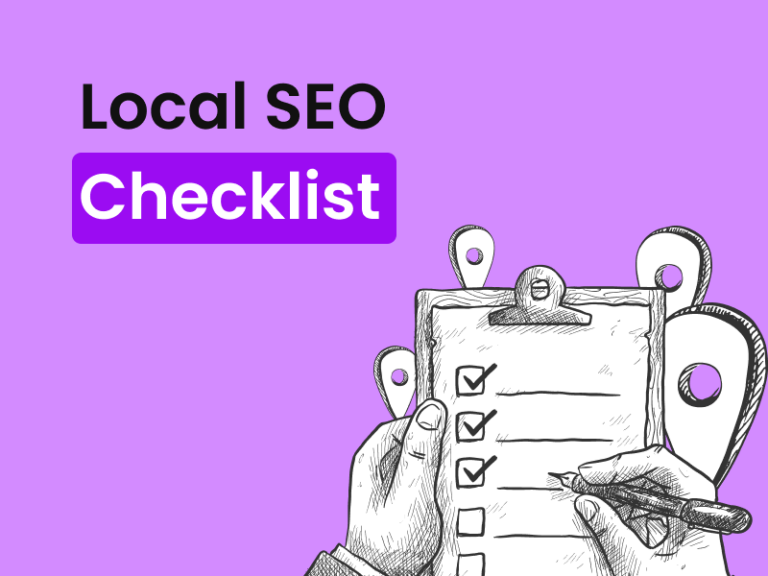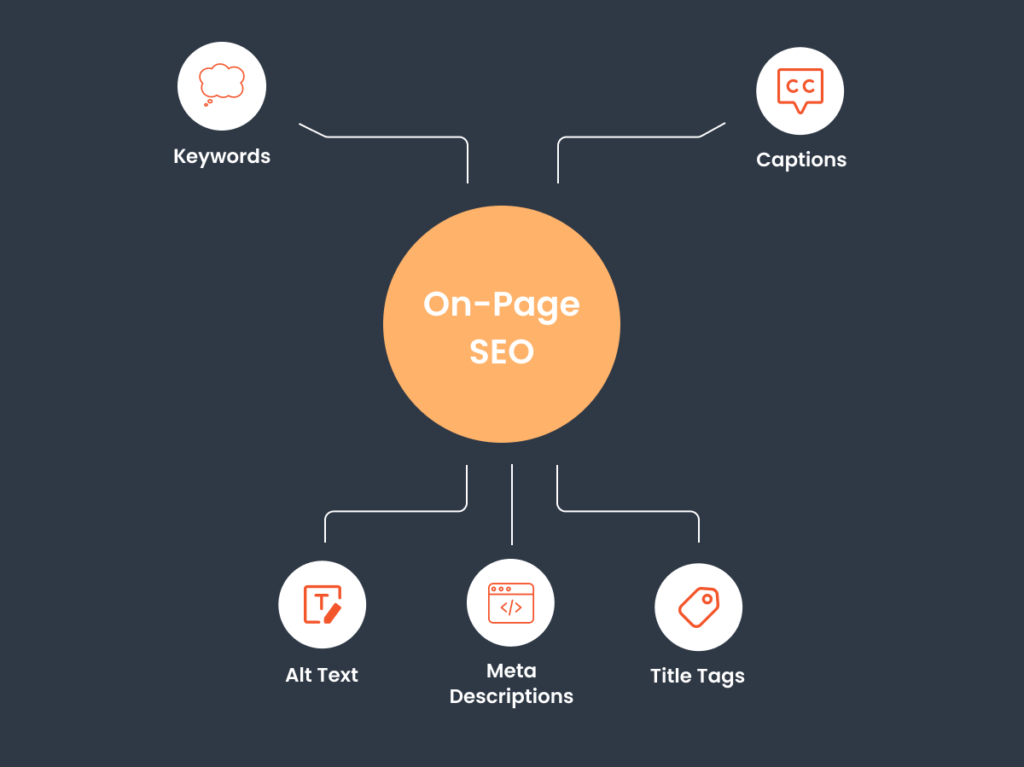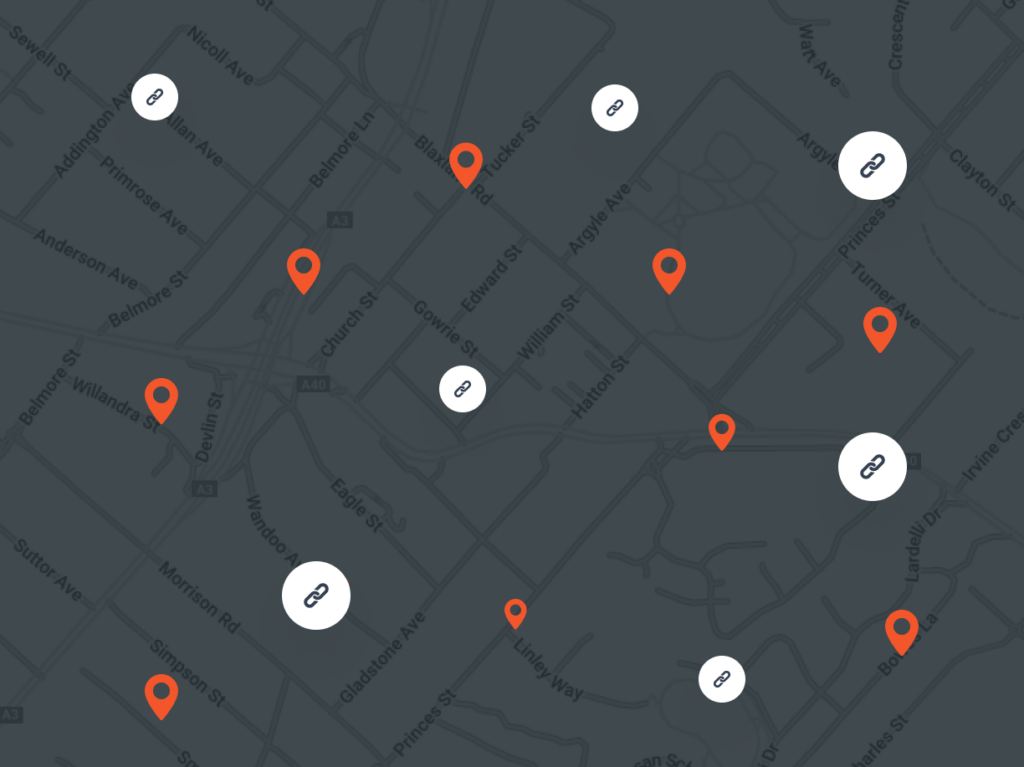Local SEO Checklist For 2024: Improve Your Local Ranking

By Melissa Ng | Last Updated 22 April 2024
Introduction To Local SEO In 2024
Why Local SEO Is Important In 2024

Including local SEO in your online strategy is vital. It’s about directly connecting with your community, increasing foot traffic, and becoming the top choice in your area.
Local SEO helps your business show up for people searching locally, especially as more users look for immediate, “near me” solutions. Being visible on the first page of Google is essential since 99% of clicks happen there.
If you’re not visible, you’re missing out while your competitors get noticed. So, let’s make sure your business stands out with local SEO.
Need a refresher on local SEO? Read our beginner’s guide: What is Local SEO and How Does it Work? A Comprehensive Guide to Local Search in 2024
What’s New In Local SEO?

Local SEO is evolving with new technologies and search engine updates.
Voice search has become a regular part of life, making it crucial to optimise for the way people naturally talk. Also, artificial intelligence (AI) is improving how search engines understand and prioritise results, highlighting the importance of precise, niche keywords.
Moreover, search engines are better at offering personalised results based on individual search histories. Adding augmented reality (AR) into your strategy might also push your business ahead in search results.
Keeping up with these advancements will help you stay competitive in local SEO.
Optimising Your Google Business Profile
Essential Steps To Verify And Optimise Your Listing

First, verify and optimise your Google Business Profile (formerly known as Google My Business) to improve your visibility in local searches.
Start by claiming your listing — follow Google’s guidelines to help you along. Ensure your business name and address are accurate to avoid confusion for both search engines and customers.
Next, showcase your business with great photos — from your team’s smiling faces to your standout products. Make sure your contact details are clear and easy to find; include your phone number and, perhaps, an email address.
Remember, consistency is key. Keep your business info the same across all online platforms to build trust with Google.
Regular Posting And Engagement Strategies

Keep your Google Business Profile active to show you’re open and ready for business. Post regularly about new updates, special offers, or events to draw attention.
Engage actively with your audience by responding to reviews warmly and answering questions promptly. This interaction isn’t just polite; it increases your visibility and signals to Google that you’re attentive to customers.
Use local keywords in your posts to boost your SEO further. Maintain this activity, and you’ll likely see improved local rankings. This approach helps build a community around your business and signals to search algorithms that you’re engaged and relevant.
Website Optimisation For Local Searches
On-Page Elements That Boost Local Rankings

Your website acts as your online storefront. Enhance it with on-page elements that catch Google’s eye. Start with title tags and meta descriptions, and include your city or neighbourhood alongside your keywords to show you’re local.
Your headers should help guide visitors, so include local keywords in a natural way. For images, name your files with local terms and ensure the alt text describes the image clearly for both search engines and those with visual impairments.
Content is critical. Write articles that reflect local interests or discuss local landmarks and events. Your website should be a go-to place for local information — clear, engaging, and filled with local relevance. Always focus on creating high-quality content that speaks directly to your local audience, as this is crucial for good local search rankings.
You can read more about on-page SEO in our blog post: Boost Rankings: On-Page SEO Essentials For 2024
Mobile Optimisation And User Experience

Today, a mobile-friendly website is essential. Check your site’s mobile-friendliness with tools like Google’s Mobile-Friendly Test. If it’s not up to standard, it’s time to make improvements.
Ensure your site adapts well to any screen size and uses fonts that are easy to read without zooming. Avoid pop-ups and sidebars that can disrupt the user experience. Make sure buttons are easy to tap and content is spaced for easy reading.
Keep your website fast; a slow site can turn visitors away. Simple, quick-loading designs are best for keeping mobile users happy and engaged.
Consistency in NAP Citations
How To Audit And Update Your NAP Information

Let’s talk about NAP — your business’s Name, Address, and Phone number.
Start by auditing your online presence. Check your details on your website, social media profiles, local directories, and any other places you’re listed. Use tools like Moz Local or BrightLocal to find and correct any mistakes.
If you spot any errors, it’s time to fix them. Start with the easy ones, like listings you can edit yourself on sites like Yelp or TripAdvisor. Log in and update your details.
For listings you can’t change yourself, you’ll need to contact the person in charge. Send a clear, polite email to the webmaster asking for an update. Be clear about what needs to be changed and provide the correct information. Most times, they’ll be willing to help.
Aim for consistent NAP information across all platforms. Even small errors can confuse customers and search engines. Be thorough and persistent to see benefits in your local SEO.
Finding Citation Opportunities
In local SEO, citations help increase your visibility. You can find new citation opportunities by using tools like Semrush’s Backlink Gap feature. Compare your site to competitors’ to see where you might be missing out.
Look for listings where your competitors are but you aren’t — it’s a great opportunity to expand your presence. Also, check industry-specific directories as they can be particularly beneficial. Don’t worry about nofollow links; they still enhance your visibility and local relevance.
Seek opportunities for citations that also provide backlinks. Industry forums, local blogs, and community event pages are good places to start. Always ensure your NAP details are accurate.
Encouraging And Managing Online Reviews
Tips To Increase Genuine Customer Reviews

To get more genuine customer reviews, make leaving a review as simple as possible. Consider sending a friendly follow-up email or an SMS with a direct link to the review platform after a customer makes a purchase.
You could also ask customers in person to leave a review after they’ve had a positive experience. Having physical prompts like QR codes in your store or service area can help too.
Remember, it’s important to keep things honest. Never buy reviews or offer unethical incentives. Instead, focus on providing excellent service that naturally encourages customers to leave positive feedback. Over time, this will build a strong base of positive reviews.
Best Practices For Responding To Reviews
Responding to reviews quickly and appropriately is crucial. Whether the feedback is positive or negative, acknowledge it quickly.
Always personalise your responses — generic replies don’t resonate well. For instance, a “Thank you, [First Name]” feels much more genuine than a standard “Customer appreciated.”
For negative reviews, respond respectfully and offer to resolve the issue. It’s often a good idea to take the conversation offline to handle their concerns privately.
See each review as an opportunity to showcase your excellent customer service. Handling reviews well can impress potential customers and turn a negative into a positive, helping you retain and attract new customers through your reputation.
Strategic Local Link Building
How To Gain High-Quality Local Backlinks

Start by positioning yourself as a local expert. Create content that highlights your area, such as guides to local attractions or features on nearby businesses. Share this content with local media or collaborate with regional websites to get more exposure.
Get active in your community by sponsoring local events or charities. This can lead to mentions and links on their promotional materials and websites. Also, consider networking with other local businesses for guest post exchanges or mutual promotions.
Use local business directories wisely. Choose those that are well-regarded and relevant. It’s not about how many backlinks you have, but the quality of each one. Think of each local backlink as a strong personal recommendation.
Avoiding Common Link Building Mistakes
Do not buy links — it may seem like a quick fix, but it can lead to major problems when Google’s algorithms catch up.
Also, avoid spammy directories that offer little value and could hurt your ranking. Focus on the relevance and quality of each potential linking site. Ask if it relates directly to your business or local area and if it adds value. If not, it’s better to look elsewhere.
Carefully cultivate your local links. Support the strong, beneficial ones and remove any that don’t fit. With careful management, you’ll develop a robust network of organic links that will boost your SEO effectively.
Schema Markup And Structured Data
How To Use Schema Markup To Boost Local SEO
Adding schema markup to your website helps search engines understand your business better. This coding language highlights key details about your local business, such as services, menus, prices, and events, making your search results more prominent.
By including schema for your NAP details, you make it easier for search engines to find and display your business in local searches. It’s a clear way to show where you are and what you offer.
Review markup adds star ratings to your search listings, which can help build trust and encourage more clicks. Remember to regularly update your markup to keep information current and relevant for search engines and customers.
Using schema effectively means your business will be better understood by search engines, leading to more engaging and accurate search results.
Testing And Validating Your Structured Data
After integrating structured data on your site, it’s important to check it’s correct and effective. Tools like Google’s Rich Results Test or the Search Console Structured Data Report can help you test and validate your site’s data.
These tools identify any issues, such as missing information or typos, and provide guidance on how to fix them. Think of them as a helpful support team making sure everything on your site works perfectly.
Since search engines and their algorithms constantly evolve, it’s crucial to regularly re-test your structured data. This ensures it remains up-to-date and continues to perform well in search rankings. Regular checks help keep your site optimised for search engines, helping you maintain and improve your local search visibility.
Creating Your Local Content Strategy
Content Ideas Tailored To Your Local Audience

Focus on what’s happening in your area. Cover local events, spotlight community figures, or discuss relevant local issues. This type of content connects you to your community.
Consider writing guides like ‘Best coffee shops in [Your City]’ or ‘Top 5 hiking trails in [Your Area]’. These not only serve local residents and visitors but also position you as a local information hub. When people see you as a resource, they’re more likely to use your services.
Also, don’t overlook seasonal content. Guides on holiday lights or summer events can attract more local searches. Where possible, include content from your audience like reviews or posts from guest bloggers. This adds a genuine local touch, making your site a central spot in the digital community.
Use Local Keywords Effectively

Using local keywords effectively helps you connect with your community. Include specific phrases like ‘vintage clothing in Sydney or ‘Bondi beachfront hotels’ in your content. These keywords tell search engines your exact location and what you offer.
However, it’s important to integrate these keywords naturally. They should fit smoothly into blog post titles, subheadings, and the body of your content.
Beyond just being found, your content should be helpful. For example, a gardening service might post ‘Best plants for the Sydney climate’ to address local gardening challenges. Aligning your content with the needs of your local community not only boosts your visibility but also establishes you as a local authority.
You might also like to read our blog post: What is Keyword Stuffing? Definition, How to Avoid and Why It’s Bad for SEO
Monitoring Performance And Analytics
Using Tracking Tools for Local SEO Insights

To manage your SEO effectively, you need the right tracking tools. Think of Google Analytics as your main tool. It shows you where your local traffic comes from, what keeps visitors engaged on your site, and which content they interact with most.
Use tools designed for local SEO, like BrightLocal or Semrush, to track your position in local search results, manage reviews, and keep an eye on your citations. It’s also useful to track performance in specific areas, such as particular neighbourhoods or cities.
Set up these tools to monitor specific targets — like different cities or postcodes — to make sure your local SEO is on point. These insights help you adjust your strategies, enhancing what works and fixing what doesn’t.
Setting Up A Routine Review Schedule For Analytics
Consistency is crucial in reviewing your local SEO data. Establish a regular schedule, like a weekly or monthly check-up, to thoroughly analyse your analytics.
In Google Analytics, set up custom alerts so you’re quickly informed about significant changes, such as a drop in traffic, allowing you to react promptly.
Also, use annotations in Google Analytics to track significant actions, like the start of a local ad campaign. This helps you connect your marketing efforts with changes in website traffic and user engagement.
Avoid getting caught up in daily fluctuations — they can be distracting. Instead, focus on identifying trends over time. This longer-term view helps you develop a strategic approach to local SEO, aiming for steady improvement and better ranking in local searches.
Disclaimer
Some of the links in this post are affiliate links. This means if you click on the link and purchase the service, we may receive an affiliate commission at no extra cost to you. Rest assured, we only recommend products we believe will add value to our readers.
Other Articles You Might Like
15 SEO terms every beginner should know
SEO for Accountants & Accounting Firms Guide: Get More Clients
SEO for Dentists: Effective Techniques for Dental Marketing Success In 2024
SEO for Tradies: How to Get Better Search Engine Rankings for Plumbers, Electricians and Builders
Top 5 Local SEO Tips for Restaurants in 2024
Submit An App
Seen a cool app you think we should review? Submit your recommendation using our form.


